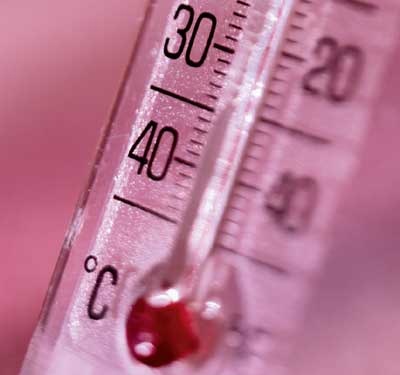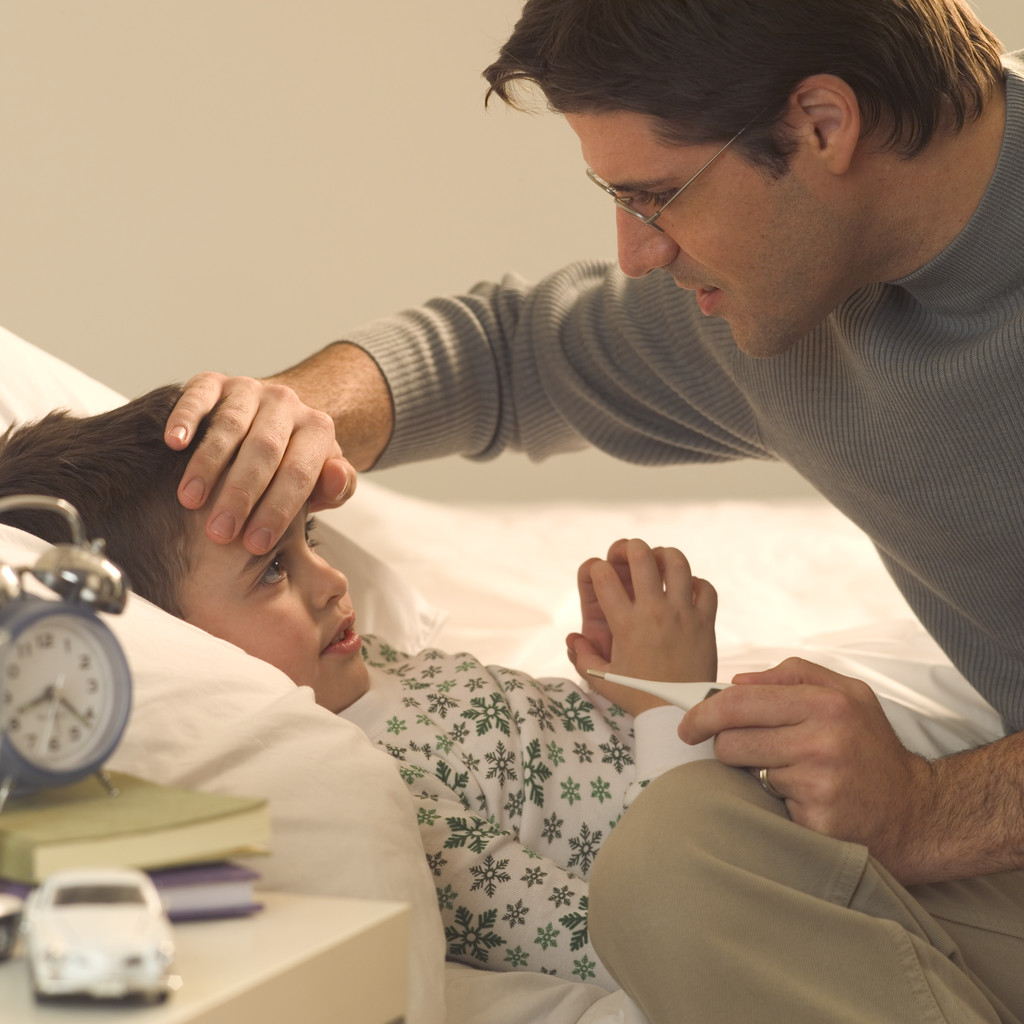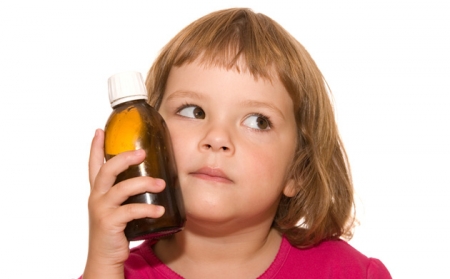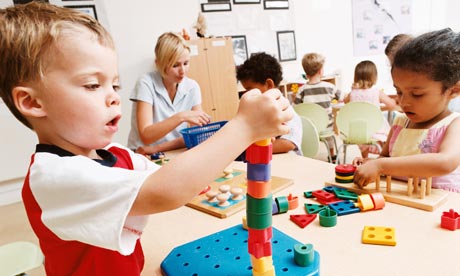|

 Your child's normal temperature will vary with his age, activity, and the time of day. Your child's normal temperature will vary with his age, activity, and the time of day.
Infants tend to have higher temperatures than older children, and everyone’s temperature
is highest between late afternoon and early evening and lowest between midnight and early
morning.
Ordinarily, a rectal reading of 100.4 degrees Fahrenheit (38 degrees Celsius) or less, or an oral
reading of 99 degrees Fahrenheit (37.2 degrees Celsius) or less, is considered normal, while
higher readings indicate fever.
 By itself, fever is not an illness. Rather, it is a sign or symptom of sickness. In fact, usually it is a By itself, fever is not an illness. Rather, it is a sign or symptom of sickness. In fact, usually it is a
positive sign that the body is fighting infection. Fever stimulates certain defenses, such as the
white blood cells, which attack and destroy invading bacteria.
The fever may actually be important in helping your child fight his infection. However, fever can
make your child uncomfortable. It increases his need for fluids and makes his heart rate and
breathing rate faster. Fever most commonly accompanies respiratory illnesses such as croup or
pneumonia, ear infections, influenza (flu), severe colds, and sore throats. It also may occur
with infections of the bowel, blood, or urinary tract, inflammation of brain and spinal cord
(meningitis), and with a wide variety of viral illnesses.
 In children between six months and five years, fever can trigger seizures, called febrile In children between six months and five years, fever can trigger seizures, called febrile
convulsions. These convulsions tend to run in families, and usually happen during the first few
hours of a febrile illness. Children may look “peculiar” for a few moments, then stiffen, twitch,
and roll their eyes. They will be unresponsive for a short time, and their skin may appear to be
a little darker than usual during the episode. The entire convulsion usually lasts less than one
minute, and may be over in a few seconds, but it can seem like a lifetime to a frightened parent.
Although uncommon, convulsions can last for up to fifteen minutes or longer. It is reassuring to
know that febrile convulsions almost always are harmless—they do not cause brain damage, nervous system problems,
paralysis, mental retardation, or death—although they should be reported promptly to your pediatrician. If your child is
having trouble breathing or the convulsion (also referred to as a seizure) does not stop within fifteen minutes, call 911.
 Children younger than one year at the time of their first simple febrile convulsion have Children younger than one year at the time of their first simple febrile convulsion have
approximately a 50 percent chance of having another such seizure, while children over one year
of age when they have their first seizure have about a 30 percent chance of having a second one.
Nevertheless, febrile convulsions rarely happen more than once within a twenty-four-hour
(one-day) period. Although many parents worry that a febrile convulsion will lead to epilepsy,
keep in mind that epileptic seizures are not caused by a fever, and children with a history of
feverrelated convulsions have only a slightly higher likelihood of developing epilepsy by age seven.
A rare but serious problem that is easily confused with fever is heat-related illness, or heatstroke. This is not caused
by infection or internal conditions, but by surrounding heat. It can occur when a child is in a very hot place—for example,
a hot beach in midsummer or an overheated closed car on a summer day. Leaving children unattended in closed cars
is the cause of several deaths a year; never leave an infant or child unattended in a closed car, even for a few minutes.
Heatstroke also can occur if a baby is overdressed in hot, humid weather. Under these circumstances, the body
temperature can rise to dangerous levels (above 105 degrees Fahrenheit [40.5 degrees Celsius]), which must be reduced
quickly by cool-water sponging, fanning, and removal to a cool place. After the child has been cooled, he should be
taken immediately to a pediatrician or emergency room. Heatstroke is an emergency condition.
|









